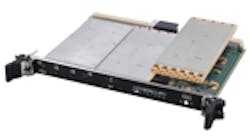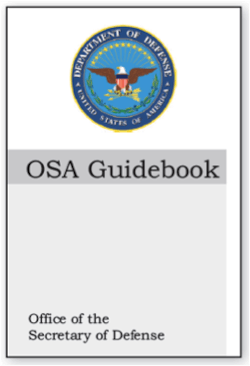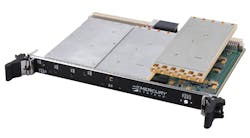Open Systems Architectures for RF and Microwave Systems
Within the commercial industrial base adherence to standards such as IEEE, ANSI and ISO are nothing new. However, there has been very little standards-based activity born out of defense. Meaning, when a standards-based approach is called for, almost all of the activity comes out of the commercial sector. This is not surprising since much of the work within defense and defense electronics is centered on platforms designed to meet very specific defense applications where standards-based solutions are difficult to develop and engineer. This is particularly true within the RF and Microwave realm where modular, interoperable, open architecture based solutions have been slow to develop.
As a result, many critical EW, radar and SIGINT platforms are not leveraging the power of open architectures. That power includes affordable, modular building blocks that enable competition while protecting IP and “golden keys.” But change is coming. OpenRFM® is a proposed standard that can bring truly interoperable, open architectures to RF and microwave systems.
Open Systems and the Department of Defense
The open systems initiative within the DoD began in earnest November 1994 when the Office of the Secretary of Defense directed that all DoD agencies use open systems and standards for acquisition for weapon systems and programs. The Open Systems Joint Task Force (OSJTF) was set up to promote open systems and standards within the defense industrial base. The preferred approach for implementation of open systems, previously called Modular Open Systems Approach (MOSA), is now called simply Open Systems Architecture (OSA).
While some modest progress has been made in the twenty years that have elapsed since the 1994 directive, a key measure was taken to add more traction to this key initiative when, in June 2013, an OSA “Contract Guidebook for Program Managers” was published. This guidebook was prepared by the Department of Defense Open Systems Architecture Data Rights Team and provides the first prescriptive “paint by the numbers” approach on how open architectures should be developed and rolled-out for key defense programs.
The OSA guidebook does an excellent job of laying out specifically what is expected of commercial entities that support the defense industrial base as it relates to open system architectures. Rightfully so however, it is left to the industry participants themselves, to drive the necessary innovation and standards activities to make it a reality.
Leveraging previous Open Systems experience
On the digital processing side of the electronics industry, an initiative for open architectures was undertaken in the first decade of the 21st century. In 2009, under the auspices of VITA, a manufacturers group that champions open system architectures, a Working Group of 28 industry members was launched. By June 2010, OpenVPX was formally ratified by ANSI (American National Standards Institute) as an open standard.
Leveraging this experience, Mercury Systems, the driving force behind OpenVPX, is now proposing OpenRFM to extend open standards to the analog and mixed-signal environments. OpenRFM is a modular, open architecture that combines hardware, firmware and software that can be applied to EW and SIGINT challenges. Its benefits are that it allows:
6U VME Carrier with three OpenRFM Modules - Quad Downconverter (left), Wideband Tuner (middle) and DDS-based Synthesizer (right)
- Affordability driven by high channel density, modular design, advanced connector technology, and the integration of digital signal processing and RF technologies
- Sustainability with a solution that provides maximum re-use of standardized technology that will protect customers’ investment for the long haul; making it “future proof”
- Flexibility by providing many system designs with multiple building blocks
- Interoperability driven by modular architecture, standardized control plane, and advanced software interface
To learn more about OpenRFM, visit www.mrcy.com/OpenRFM where you can also download this Position Paper.


